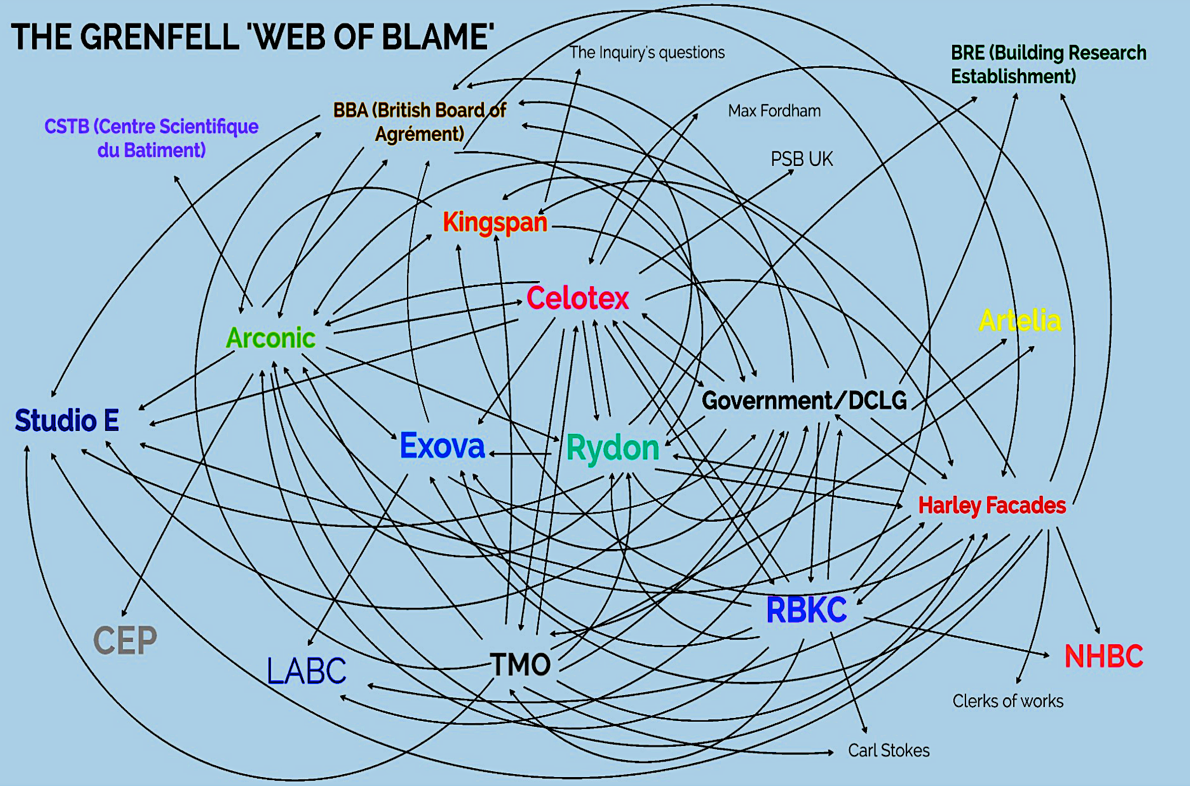After five years, thousands of hours of cross-examination, 320,000 documents and £150 million in legal costs the families of the 72 victims of the Grenfell Tower tragedy are no closer to finding the truth: Long before the fire in 2017, Peter Apps reported on the dangers of cladding with a "core of solid petrol" being fitted to old, draughty tower blocks for insulation and he goes on to highlight flaws and failures in government and the construction industry from the mid-80s when 'government replaced 300+ pages of building regulations with 24 standards.
His new book; Show Me The Bodies, is taken from a quote allegedly given by a civil servant responsible for guidance on fire safety in 2016 when warned a similar fire to the one at Lakanal House in 2009, killing 3 adults and 3 children, was likely to happen again...

Construction Enquirer.com
...for which nobody is prepared to take responsibility:
The stand-out evidence of corporate malice is a rigged fire-safety test that enabled flammable Celotex insulation to be used and the mutual dependence of businesses and government to hide the truth from the public. In 1999 a committee of MPs urged ministers to require cladding to be fireproof and the government's response was that it would've been "unpopular with industry". Companies perennially complain about 'cumbersome regulations' but when they're diluted or removed then the peril of such events becomes clear.
His new book; Show Me The Bodies, is taken from a quote allegedly given by a civil servant responsible for guidance on fire safety in 2016 when warned a similar fire to the one at Lakanal House in 2009, killing 3 adults and 3 children, was likely to happen again...

Construction Enquirer.com
...for which nobody is prepared to take responsibility:
The stand-out evidence of corporate malice is a rigged fire-safety test that enabled flammable Celotex insulation to be used and the mutual dependence of businesses and government to hide the truth from the public. In 1999 a committee of MPs urged ministers to require cladding to be fireproof and the government's response was that it would've been "unpopular with industry". Companies perennially complain about 'cumbersome regulations' but when they're diluted or removed then the peril of such events becomes clear.
Last edited:



